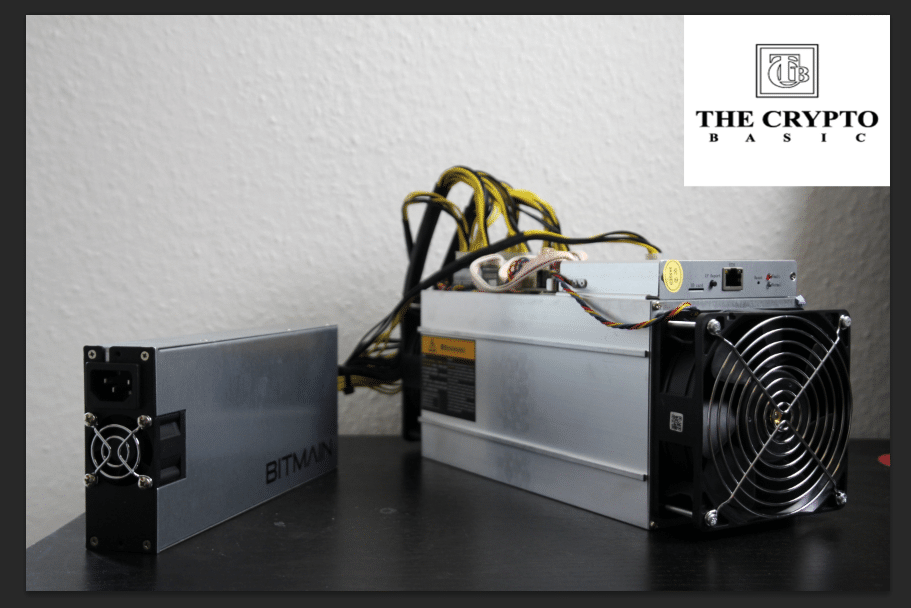Consensus mechanism stands for algorithms, protocols, or systems through which cryptocurrency works. It’s useful for preventing and identifying any sort of intentional cheating or double spending in the crypto world.
Presently, the two common consensus mechanisms in the crypto world are PoS (Proof-of-Stake) and PoW (Proof-of-Work). Both these consensus mechanisms work to validate cryptocurrency transactions.
However, both PoS and PoW are different from each other. Here’s how:
What is PoW or Proof-of-Work?
Cryptocurrency works under a decentralized blockchain, which means its transaction is not managed by central authorities. This decentralization is further supported by the consensus mechanism.
Proof-of-Work is one of the consensus mechanisms in which the miner must solve complex problems to add new blocks to the blockchain. It requires the miners to solve mathematical puzzles (like hash functions) or cryptographic equations.
It also needs a high source of computational power and energy through systems/computers. The miner who solves the problem first can only add the new blocks to the blockchain.
PoW was first used by Bitcoin. It helps simple cryptocurrencies like Bitcoin to maintain a secure decentralized blockchain.
Pros of PoW
- Offers good security
- Miners can earn crypto rewards
- Fault-tolerant
- Quite simple and easy to implement
- The oldest and most trusted consensus mechanism
Cons of PoW
- High energy consumption
- Requires systems and equipment
- High fees
What is PoS or Proof-of-Stake?
Proof-of-Stake, on the other hand, works as an alternative to PoW. In PoW, it is important for the miners to use high computing power (through systems) for validating transactions. But in PoS, the miners must stake coins for the same. As compared to PoW, PoS limits the need for excessive energy consumption.
In PoS, the miners with more coins get additional blocks. Put simply, it entirely depends on the total stake the user has.
Suppose there are four miners, Miner A with 50 coins, Miner B with 70 coins, Miner C with 80 coins, and Minor D with 75 coins. Then, among these miners, Miner C will be given the opportunity to validate the block.
PoS is ideal for energy-efficient mining. As experts are getting concerned over excessive energy consumption in crypto, this can be an ideal approach for validating transactions. The concern can be justified by the news where recently White House asked crypto mining companies to share their energy consumption with regulators.
Pros of PoS
- Fast and less expensive than PoW
- Eco-friendly, energy-saving
- Good scalability
- Eliminates complex mathematical problems for validating transactions
- Doesn’t require exclusive systems or equipment
- Versatile and flexible
Cons of PoS
- Still new for many users
- Lacks decentralization
- Limitations of accessibility
Before you move forward with any of these consensus mechanisms, it’s recommended to familiarize yourself with the basics of crypto trading for beginners. If you’re new to crypto trading but are experienced in the forex market, it’ll be easier for you to understand the basics.
Both markets have brokers as middlemen for buying and selling the forex/cryptocurrency. The Forex industry, for example, has efficient brokers like FP Markets for trading forex and CFDs. In order to know more about this, you can read the DailyForex team review FP Markets.
PoW vs. PoS: The Difference
| Features | PoW | PoS |
| Mining | In PoW, computing power decides the mining of the block. | In PoS, mining is dependent on the stake of coins. |
| How does it work? | Miners must solve complex problems to add blocks. | The miner (for validation) is decided by an algorithm as per the size of the stake |
| Rewards | First, block miners get the reward | Network fees are provided instead of block rewards |
| Equipment’s | Specialized equipment like CPU, GPU, and ASIC are used. | It doesn’t require powerful mining equipment. |
| Cost | Less Expensive | More expensive |
| Energy-efficient | Less Energy-efficient | More energy-efficient |
| Malicious Attacks | Requires 51% of computation power for malicious blocks | Requires 51% of all cryptocurrency ownership |
| Security | Depends on the number of hash. High numbers mean more safety. | Stacking locks the cryptocurrency and ensure network safety |
| PoW cryptocurrencies | Litecoin, Dogecoin, Bitcoin, Ethereum, etc. | Dash, Binance coin, Peercoin, etc. |
PoW or PoS: Use in Crypto World
The use of PoW or PoS depends on the reason for which you are using these consensus algorithms. For example, if you want to secure your wealth, it’s worth choosing PoW for its decentralized consensus mechanisms and high-end security.
Similarly, PoS is ideal for smart networks and a strong infrastructure of decentralized applications that work on P2P or blockchain networks and are around the corner. This is because PoS is more scalable and efficient for fast transactions.
PoW vs. PoS: The Winner
Both PoW and PoS have their own pros and cons. PoW is trusted, well-tested, and quite effective in preventing malicious attacks. However, it’s associated with high energy consumption and environmental degradation on some level.
Meanwhile, PoS offers good scalability and is comparatively much more energy-efficient than PoW. However, it’s still new and lacks decentralization, which makes users hesitant about its security.
So, only time will tell who is the winner among the two. However, both of these consensus algorithms are quite prevalent in the crypto world.
Disclaimer: This content is informational and should not be considered financial advice. The views expressed in this article may include the author's personal opinions and do not reflect The Crypto Basic’s opinion. Readers are encouraged to do thorough research before making any investment decisions. The Crypto Basic is not responsible for any financial losses.
-Advertisement-


